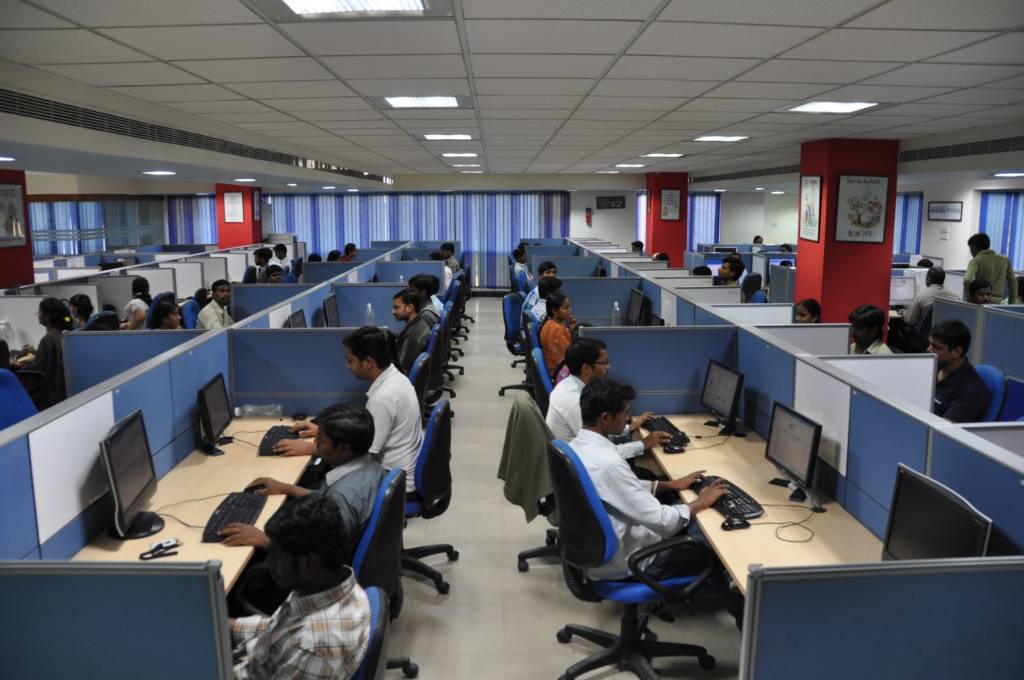Recently, All India Council for Technical Education (AICTE), the governing body of the technical education- engineering, management, pharmacy, architecture and other technical institutions, ruled that the colleges publishing any wrong information about placement and facilities will be punished.
There are more than 10,000 AICTE governed colleges in the country; more than 4,000 of them are engineering colleges. Within the engineering, the maximum numbers of seats are for Computer, IT, Electronics- the graduates of which are employed in the IT sector. Apart from Engineering, there are diploma and Computer Application (BCA, MCA) courses to get job in software companies.
In the last few years, the colleges have requested to AICTE for closing down the Civil and Mechanical streams to open more Information Technology vacancies. Therefore, more than a million people graduate from various engineering, diploma, degree courses to seek employment in the IT industry.
In spite of so much focus on Information Technology Engineering, India produces sub-standard engineers on average; and the country has not produced a single IT company whose products are widely used by consumers.
The Dell Computer, which I am using to write this article, is made by an American company and assembled in China. In a typing this article on Microsoft Word, product of another American company: Microsoft; the operating system in our Smartphone- Android or iOS- is also American made; the majority of social media apps downloaded in my smartphone like Facebook, Twitter, Instagram are also American. If I have to look for some information, I will go to Google, and then, most likely, to Wikipedia- both American companies.
Among the 10 largest Internet Companies by revenue, 6 are from the United States and 4 are from China. Similarly, among the 10 largest technology companies by revenue, 5 are from the United States and the rest from South Korea, China, and Japan. Therefore, despite the fact that India has more engineers than total number of students in countries like Japan, the country does not have a single big technology or Internet company.
Even in software, which is considered the core of 200 billion dollars Indian IT industry, there is not a single Indian company. Among the top 10 software companies, 8 are from the United States and two from Europe.
The Indian IT engineers and IT companies are a bundle of paradoxes. Indian IT workers dominate the Silicon Valley, and currently, Indian Americans head some of the prominent technology companies like Google, Microsoft, IBM, and Adobe are headed by Indian Americans. The people of Indian ethnicity are employed disproportionately in large number in the US tech industry.
The mad rush behind software engineering in India is due to various reasons. The colleges in India have become avenues to get the jobs, given the huge unemployment in India. In India, the software industry is a major sector of the economy and contributes 7-8 per cent of country’s total GDP. With the companies like TCS, Wipro, Infosys, Tech Mahindra, and Cognizant (not Indian company but majorities of employees are Indian), the job availability in Indian software is better and entry-level salary is respectable.
The yearly per capita income in India is around 1.25 lakh rupees and entry-level salary in Indian IT sector in around 3 lakh rupees, or 2.5 times more than per capita income of the country.
It looks like a respectable career opportunity to students, as well as, parents see engineering as a career with good return of investment, and sometimes forcefully pushes their wards into engineering.
But, if the brightest of Indian students are being pushed into engineering, why there is not a single Indian company in top 10 technology, Internet, and Software companies.
The majority of the students pushed in software engineering are not interested in coding or problem solving; what they aim for in four years of college is good marks in theory paper; good communication skills; and whatever gets them job in the placement season.
The mass recruiters of the campuses do not check the core coding skills. Only a few of the students are good with core coding skills and if the mass recruiters test the coding skills, the majority of the students are bound to fail.
Therefore, almost every big IT company has its training Centre, where they deploy the students for six months and teach core skills. After getting into the IT companies, only the students with interest in core programming skills have good career graph, otherwise, majority of the students get less appraisal than the prevailing inflation in the country, and many of them even get fired after a few years.
Majority of the students get into engineering for a respectable entry-level salary and do not pursue their interests as entry-level salary is less in those fields. But in the long run, if a student gets into a field of interest, s/he will get expertise in the field and the career graph would be better compared to engineering.
But, given the peer pressure, parental pressure, and his/her own short-sightedness, majority of the students get into software engineering and this results in mediocre engineers produced by India, which is reflected in their career graph. It is also reflected in the mediocrity of the majority in Indian technology, Internet and software companies, which do not even appear in the world’s top 10 companies despite contributing 7-8 per cent in India’s GDP.
